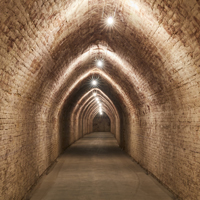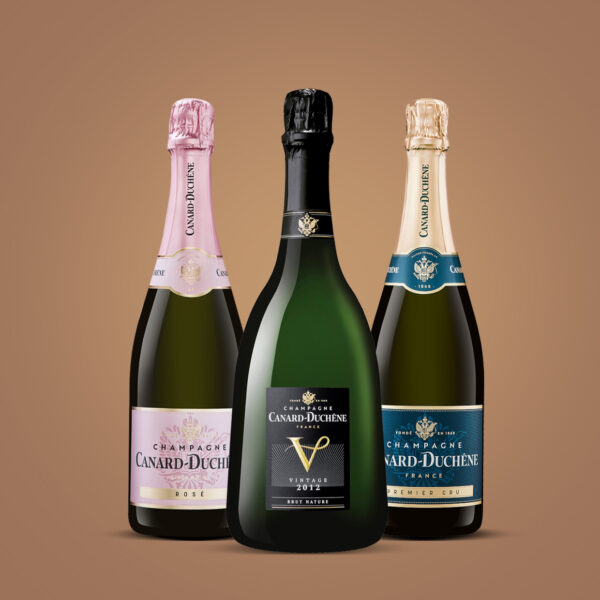The Mag
Food/wine pairing: what champagne should you choose?

For a few years now, a festive dinner accompanied by champagne has been very popular. And for good reason, the harmony between food and champagne is incredibly rich and opens the door to totally new flavours.
Sparkling on oysters, flesh on a fish, pure on an old earldom, champagne is not afraid of anything. Its palette is so vast that it can afford to accompany all festive dishes. However, you still have to make the right choice between an exceptional Vintage, a more versatile Brut, a mineral Extra Brut, a Blanc de blancs bursting with freshness or a fruitier Rosé.
So, which champagne should you choose for the holidays? Find out which champagne to choose!
STARTERS,
NOBLESSE OBLIGE
The more a recipe is composed of high-quality products, the more the champagne will have to be in sync with it. The aromas of black truffles, for example, are extremely complex and call for a champagne with body and depth of the same standard.
A fine Vintage is the perfect accompaniment to some black truffle grated on a slice of toasted buttered bread. The same goes for foie gras which reveals itself even more under the aromas of a Blanc de Noir champagne.

Oysters are often a must for New Year’s Eve. The soils of the Champagne region are rich in chalk and marine sediments. They bring out the light acidity and texture of the oyster. A Blanc de blancs full of freshness is an excellent choice to sublimate these iodised flavours.
WHICH CHAMPAGNE SHOULD YOU CHOOSE
FOR THE MAIN COURSE,
OPT FOR MILLIMETRE AGREEMENTS!
The performance is a little more delicate for the main course, but it can be just as remarkable. The Blanc de blancs go well with all fish or seafood dishes served with a creamy sauce (e.g. Norway Lobster with creamy sauce).
Poultry or white meats in a creamy sauce are remarkable with a Blanc de Noir (e.g. creamy chicken with morel mushrooms). A classic Brut can accompany less typical flavours, such as a vegetable terrine or turbot in a creamy sauce. Meat with a stronger taste, such as lamb, is perfectly suited to a rosé champagne, both of them developing spicy notes. Salmon also tastes divine with a Rosé champagne. But the fine natural bubbles of a Blanc de Blancs are incomparable in order to sublimate all its softness.
CHEESE AND CHAMPAGNE,
AN ENCHANTING DUO
You may be accustomed to the cheese and red wine combo, but champagne is nevertheless the ideal compliment to cheese. Its rusticity and salty notes are just waiting to be zested by the champagne and its light bubbles. But which champagne will be the best accompaniment?
Let’s take Brie for example, at room temperature it will be most divine accompanied by a Vintage or a Rosé Champagne. Champagne Brut can be served with a Brillat-Savarin, or a slightly refined goat’s cheese. The Blanc de blancs also goes very well with a banon or an ashy goat’s cheese. The more the cheese is matured (old mimolette, old parmesan), the more exceptional the champagne must be to create a real contrast of flavours.
DESSERT, FIND THE
RIGHT BALANCE
Some people advise against using champagne to accompany dessert, but some recipes express themselves completely with an accompaniment of bubbles. The important thing to remember is to always keep a good balance without overpowering the dish with sweetness. So which champagne should you choose? Easy, Rosé champagne and its powerful fruity taste works very well on red fruits, strawberry tart or raspberry sabayon. The demi-sec or semi-dry champagne is fantastic with ice cream or sorbets.
The association between chocolate and champagne is not obvious and must be handled with care. But a dessert made from high quality chocolate is sure to be enjoyed with the roundness of an old champagne. Certainly a risk to be taken, but the richness of champagne is such that it never ceases to inspire the most astonishing aromatic creations. The spirit of pure freedom!
These articles may be of interest to you

Knowledge
How many glasses are there in a bottle of champagne?
The champagne flutes are placed on a low table and the champagne is chilled. Only the guests are missing and should not be…

Lifestyle
Setting a table in style
The art of the table can sometimes seem a little conventional with its immutable codes.




